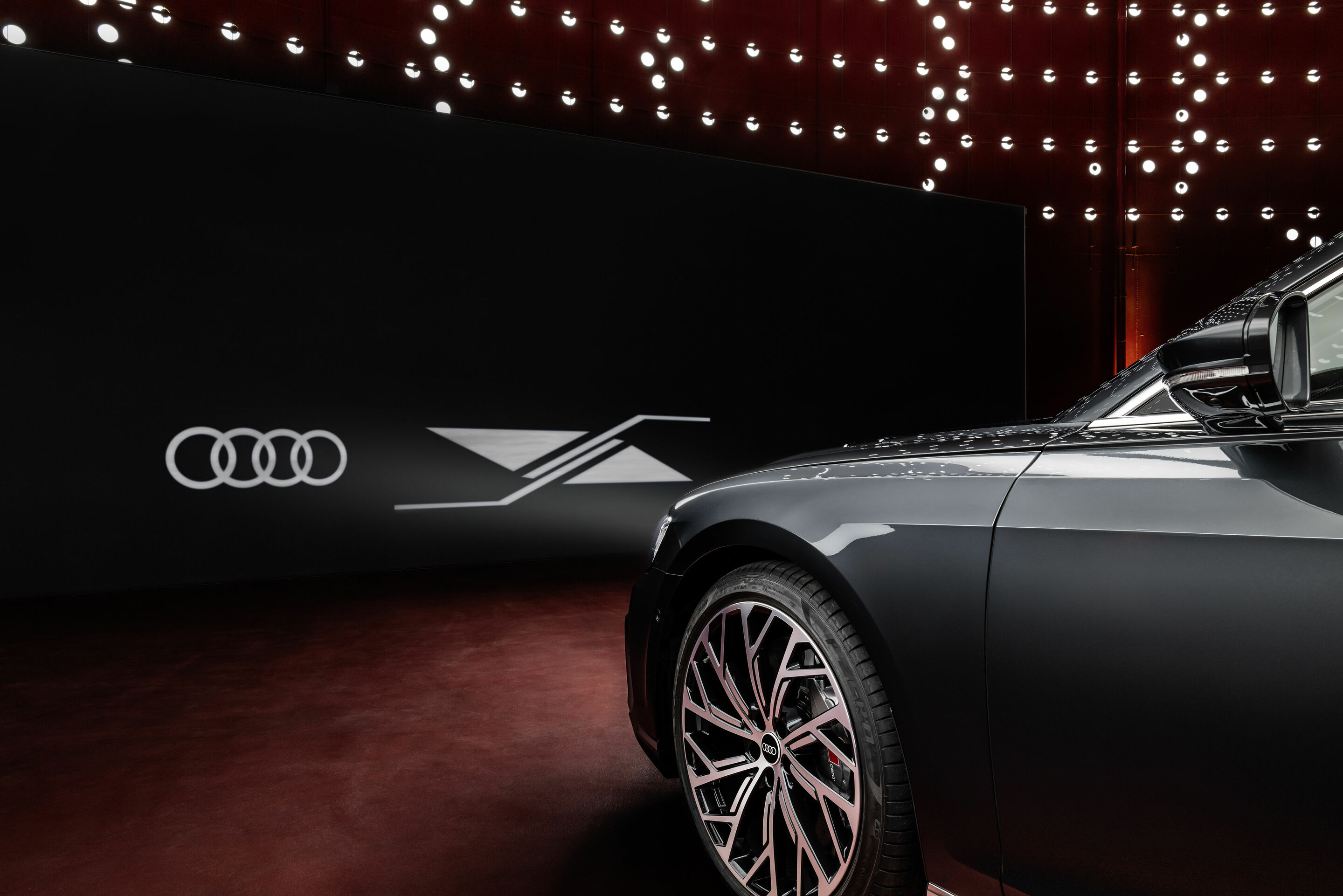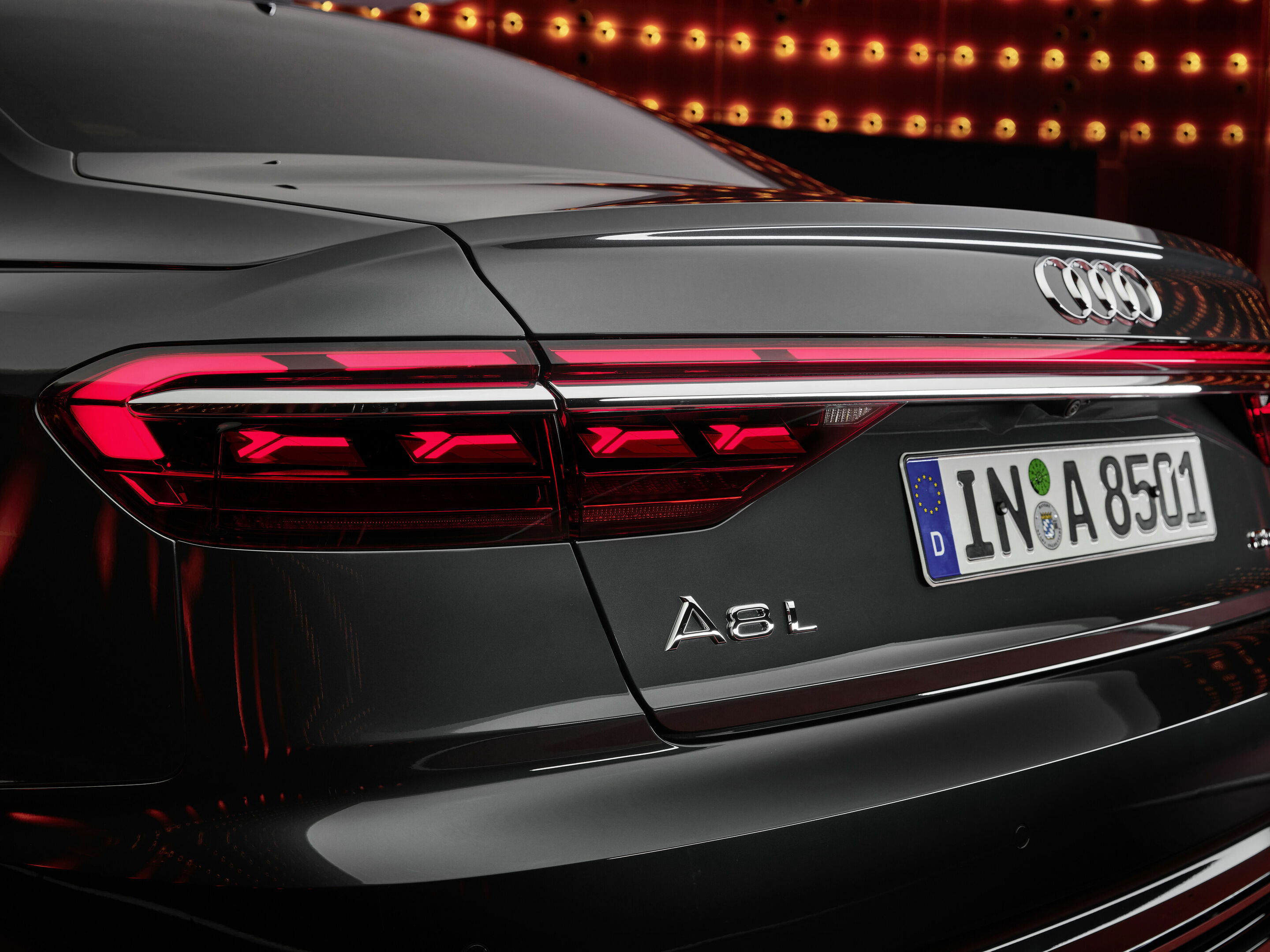Interview with Oliver Hoffmann:
“The Audi A8 defines what premium means for the brand”
- The Audi A8 has always stood for the brand’s premium standards
- A pioneer in lightweight construction, light technology, and the MMI operating system

All-wheel drive quattro and light construction: When it was introduced at the 1994 Geneva International Motor Show, the Audi A8 sent a clear message to the competition. In the following interview, Oliver Hoffmann, Member of the Board for Technical Development, discusses the importance it has acquired at Audi since then and how it meets the increasingly complex demands of a digitized world.
The first Audi A8 was a milestone in the development of the Audi brand. What role did the A8 play then and what role does it play now in the brand’s conception of itself, including in distinguishing it from the competition?
The A8 was the brand's first step into the luxury class. At the same time, with its many technical innovations and progressive design, it sent a strong message to customers and the competition: Audi is also a leading brand and a real force in the traditional luxury sedan segment. Even today, it is the flagship and it defines what premium means for us in that segment. I find that particularly fascinating about the A8.
You mentioned that the A8 represents the brand’s premium standards more than any other car. How did Audi define premium in 1994 and what does premium mean today?
In 1994, the focus was on technologies like the Audi Space Frame and quattro all-wheel drive, dynamic handling and driving comfort, and also on a high-quality interior experience. Since then, exquisite materials, the best workmanship, and outstanding seat comfort have become standard. Today, premium is defined by the total experience: convenience equipment like the relaxation seat in the 13 cm (5 in.) longer A8 L with an array of possible settings, an optional massage function and heated footrest, technical features like OLED technology or active suspension, and high-performance electronic systems like the central driver assistance controller, known as zFAS. It continuously generates a comprehensive image of the surroundings from its combined sensor data. All the assistants, including the Remote Parking Assistant, benefit from that database. But it’s not just a matter of what is technically possible. Above all, it's about recognizing and fulfilling customers’ needs.
The A8 speaks to premium customers around the world. How is Audi able to continuously anticipate their increasingly heterogeneous demands anew?
Our luxury class customers are younger than the competition’s. They are increasingly focused on non-material things – things like time, space, or autonomy. In China, for example, we’re seeing that our A8 customers like to be driven. They use the interior as an office where they can make phone calls and write emails or use the relaxation seat functions to relax. However, on the weekends, they want to take the wheel and enjoy driving. So the car has to be as much fun in the front left seat as in the back right. For that reason, driving characteristics are just as much a part of the overall experience of a luxury sedan. The predictive active suspension, for example, makes a very wide range possible – from dynamically taut handling to velvety rolling. It steers each wheel separately with electromechanical actuators, which significantly reduces the car's body roll. Thanks to the camera-based projection, it perfectly offsets pitching movements. Additionally, the body slopes into a curve up to three degrees, which means that cornering is hardly perceptible – an unbelievable increase in comfort! The two screens in the back of the reworked A8 are also custom tailored to our customers’ expectations. They complement the state-of-the-art generation of the Multimedia Interface (MMI) and, for instance, backseat passengers can mirror their smartphone content on those displays. All these examples show how diverse our customers’ needs and demands are.
The A8 has set a wealth of new technical standards. For you, what are the most important developments that the A8 has produced?
Let's go back to 1994: in order to substantiate our aspirations amid world-class competition, the A8 needed characteristics that weren’t just convincing, but rather impressive. And we gave it to them from the start with the aluminum construction and the quattro all-wheel drive. The Audi Space Frame gave the D2 a major weight advantage over a comparable structure made of steel. Its agility and efficiency were correspondingly high. The quattro all-wheel drive also improved the A8’s handling. The S8 that went on the market in 1996 also contributed to that, of course. Personally, I find the 6 liter W12 engine that we’ve been using in the A8 since 2001 and the 5 liter V10 FSI with 450 PS, which powers the D3 generation of the S8, particularly impressive. The armored A8 L Security, which Audi first presented in 2005 and is popular among well known political, economic, and social figures, also makes a statement. The next big step forward is LED light technology. The A8 is the first Audi to use LED daytime running lights. We were the first to put rear LED lights into serial production. The third generation (D4) sticks in my memory because of two features: in 2009, we decided to stop pursuing a dual strategy and to equip the A8 with air suspension. That decision worked out completely: No suspension technology better embodies the balance between comfort and handling. On top of that, the D4 was the first A8 with a hybrid drive system. It blazed the trail for today’s plug-in hybrids. Incidentally, the current A8 was also the first Audi with a touch operating system with haptic feedback.
The A8 represents Audi’s approach to challenging the limits of what is technically possible. To what extent is that way of thinking reflected in other series?
To be absolutely clear: the Audi A8 is our innovation leader. We do everything we can to always introduce the newest technology in the A8 first and then in other series and segments. The approach that we bring to producing that car radiates into the rest of our portfolio. That's because customers’ needs aren’t only diverse and demanding in the luxury class. We have to set ourselves apart from the competition with quality and comfort in the compact class as well. That's true regardless of whether we are talking about light technology, driver assistance systems, or infotainment. We are absolutely aware that that kind of progress is expected of us.
The interior experience in the A8 has always played an important role. Now and in the future, the interior is increasingly important due to digitalization and further development of automatic driving functions. What does that mean for the development and design process in future vehicles beyond the premium segment?
The interior of the A8 was always a feel-good place. That means that the central question for the future is: How will I spend time in my car when I’m no longer needed to drive it? The car is increasingly important as a “third place” next to home and work. It is becoming a living world where personal freedom takes center stage. The car becomes an office, a movie theater, or a place for gaming, shopping, or relaxing. That’s why, in the future, the feel-good environment will also be a central focal point – with variable seating positions, comprehensive entertainment, and lighting effects that we at Audi play with at great expense and a high degree of technical refinement. For that reason, we have changed our perspective in the design and development process. Now we are developing cars from the inside out, so quite deliberately around the passengers.
Audi wants to position itself as completely electric. How are the A8’s success parameters contributing to the brand’s future electric premium models?
The A8 has made a major contribution to paving the way for future electric models. I’ll give you three examples. The light, composite design of the luxury sedan is a critical factor in electromobility. More than ever, that has to do with saving weight and efficiency. The standard 48 volt mild-hybrid system and the plug-in hybrid drive in the A8 TFSI e likewise mark an important step on the way toward completely electrifying the brand. On the other hand, wind and other noises are particularly conspicuous in purely electric cars. Targeted and effective insulation therefore plays a bigger role than ever. The extremely quiet and well insulated A8 already offers numerous solutions in that area, including complex door seal concepts, doubled acoustic glass, and fine-seamed seals at connection points. But for me, it is very important for us not to define e-mobility solely in terms of technology. The mobility of tomorrow has to offer individual and emotional experiences, meet customers’ needs, and quite simply be fun.
How is it going with Audi's premium portfolio?
Audi is a premium brand, so the luxury class plays an important role for us. That is also reflected in the A8, which has been made fit for the coming years through product enhancements. Moreover, we are working on concepts that will define high class mobility for the future. One example is the Audi grandsphere concept, which we recently exhibited. It offers autonomous driving and unprecedented freedom. By getting rid of the steering wheel, pedals, and displays, we developed an interior with a completely new sense of space. Passengers have an unobstructed view and access to all the functions of the digital ecosystem. That extends from individually tailored infotainment offerings to varied route configurations to restaurant and hotel options. The way we see it, Audi is putting its customers’ wishes into focus for the future.

